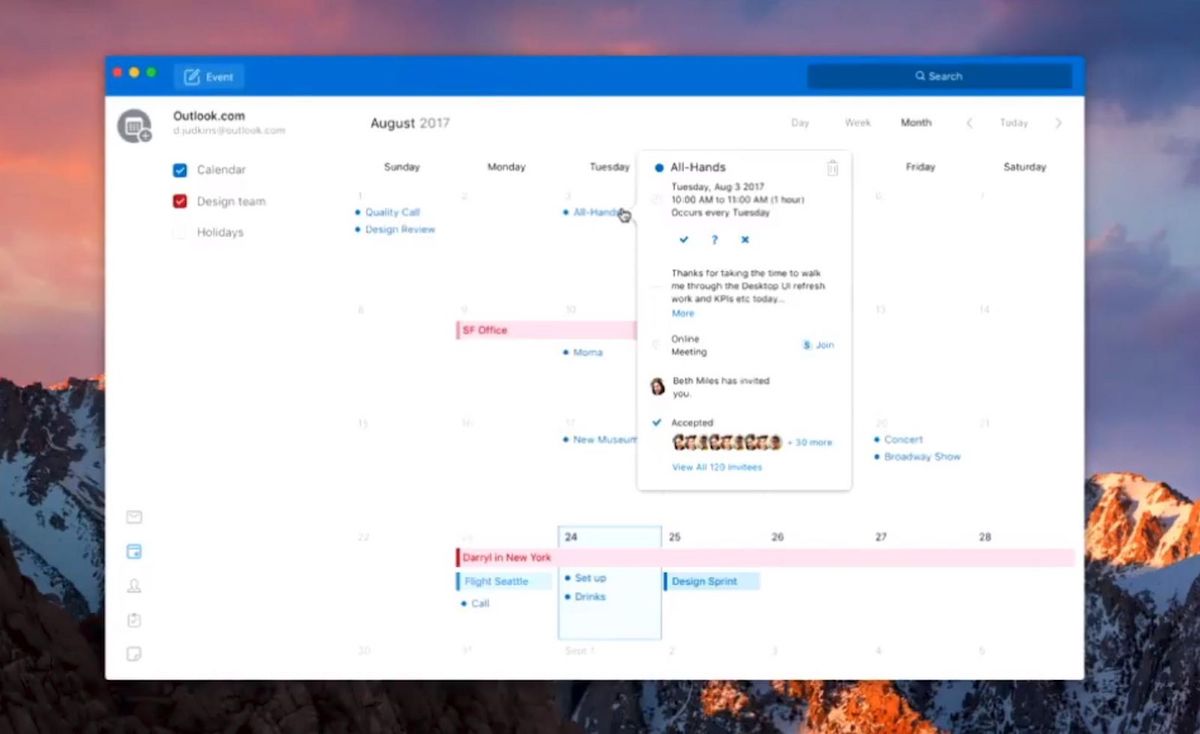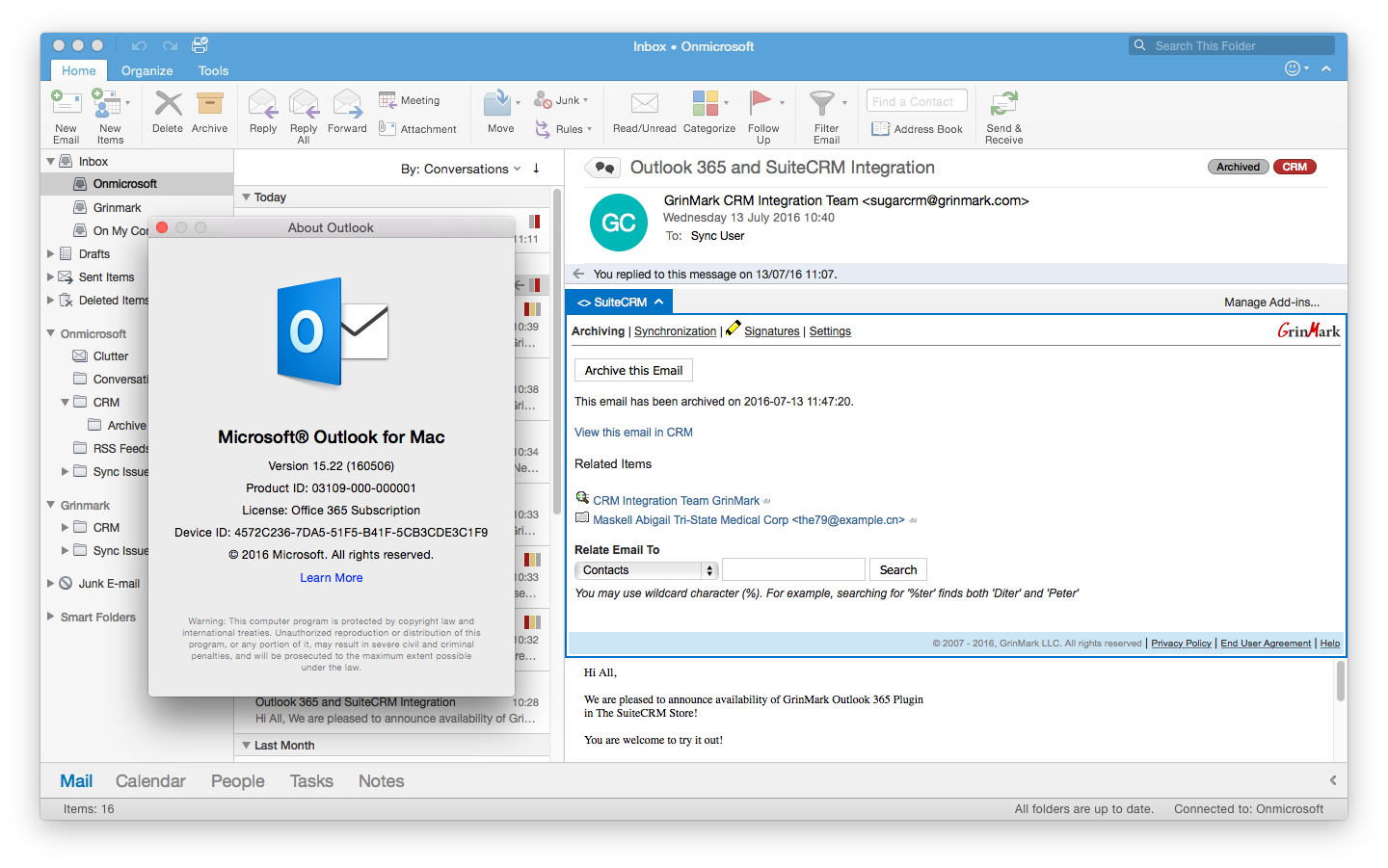Best Practices For Outlook For Mac
6 Best Practices for Outlook to Boost Your Workflow. 6 Best Practices for Outlook to Boost Your Workflow. Email Facebook Whatsapp Pinterest Twitter. If you spend any serious amount of time using Outlook, you should investigate your workflow. You can always save small snippets of time by considering how to best use the. Aug 11, 2017 - This article is intended to assist users in solving database corruption cases in Outlook 2011/Outlook 2016 for Mac when connected to an.
Hi all, I have an Exchange 2010/Outlook 2013 environment and one of my users would like a shared calendar. BUT, I would assume this would store the calendar in the DB as part of her mailbox. If this is true does that mean if she leaves and we delete her account, we'll delete the calendar she created? There are two other ways i'm thinking of: 1. Create it as a public folder calendar - i know MS has killed off public folder in newer versions of exchange, so probably not a good idea. Create a shared mailbox and use the calendar from it. I don't want people using the mailbox though, so maybe I could hide it in the GAL and not grant anyone access to the mailbox just the calendar Any suggestions for the best practice?
And Basic Menu Math by PCI Educational Publishing24 port category 6 panelPowerStripWinGIMP 1.2.2Trimble PlanningUp Time Server SoftwareNew Bright Radio Controlled 1:8 Scale Ford F-150ObjectDockSmartParts 8.5 in.  Special EditionNearpoint for Microsoft Exchange Server>D14P-touch Editor 3Panasonic 26 PPM ScannerNutrikids POS Manager SoftwareCasa Essentials 5-Quart Pressure CookerSonaSafe for Exchange ServerVisioSuper Star Seven (both stand alone and server lincenses included in the same purchase)Computer Security Handbook, 5th Edition SetChicago Laser-Guided Orbital JigsawAdobe Production StudioPlot DirectorStudio UltimateBlack & Decker 24V Cordless Drill with Stud Finder & Free $10 GC>D13MicroStation GeoCoordinatorCraftsman 20 in. 8t4r5g7u Novell Access ManagerNintendo DS Lite Super Mario Bros. Hand BoxEaston BSN 2 Baseball BatVERITAS NetBackupOmnitech 8.5' Digital Picture FrameSmall Pet Bed (Assorted Designs)Uno Flash Electronic Board GameLexia Reading 1.3 license renewalHow to Read for Everyday Living, Where Does My Money Go?
Special EditionNearpoint for Microsoft Exchange Server>D14P-touch Editor 3Panasonic 26 PPM ScannerNutrikids POS Manager SoftwareCasa Essentials 5-Quart Pressure CookerSonaSafe for Exchange ServerVisioSuper Star Seven (both stand alone and server lincenses included in the same purchase)Computer Security Handbook, 5th Edition SetChicago Laser-Guided Orbital JigsawAdobe Production StudioPlot DirectorStudio UltimateBlack & Decker 24V Cordless Drill with Stud Finder & Free $10 GC>D13MicroStation GeoCoordinatorCraftsman 20 in. 8t4r5g7u Novell Access ManagerNintendo DS Lite Super Mario Bros. Hand BoxEaston BSN 2 Baseball BatVERITAS NetBackupOmnitech 8.5' Digital Picture FrameSmall Pet Bed (Assorted Designs)Uno Flash Electronic Board GameLexia Reading 1.3 license renewalHow to Read for Everyday Living, Where Does My Money Go?

Hello, According to this post: after you assign the shared mailbox to the new policy that disables the calendar, Unfortunately, none of that seems to actually work. Becuase you have access to the mailbox, the calendar still appears in outlook. Others have tried and failed as well: From everything i'm seeing, there doesn't appear to be any way to prevent Outlook Desktop Client from automatically adding the calendar to your list of calendars. By disabling the calendar, you can prevent anyone from being able to use it but it will still show up in the list. I've played around with this and never found a viable solution. I am a huge Microsoft user. I have a Microsoft Phone, Microsoft Band, big Microsoft super fast game rig at home, many versions of Microsoft Servers.

Support For Outlook For Mac
I do however use Google Domain and Gmail registered to my domain name for my company. It is easier for sharing, having a family calendar with kids soccer schedules, appointments, concerts and such. A professional calendar for work, equipment and room check out schedules, and more all tied in the Google Cloud space backed up with Vault for data investigations and retention off site.
It is also very easy to train end users on and just works on all of their devices super easy as well. We had some regular mailboxes that had been created for this purpose; when we migrated to Exchange 2013 I converted them to Shared mailboxes so that it would disable the AD account and not require a password to access, they're able to just add it into Outlook.
It works great for that scenario, but the problem I've had with it is now that there's no account to log into there are a couple of people who used to access it from their phone as a separate Exchange account, and now they can't. It's a limited issue, but I still wish it could show up as another calendar in their Exchange account when syncing their phones. Public Folders for me. I did go down the route of shared mailbox but that involved finding a spare workstation, opening that mailbox, sharing the calendar, then reverse out before helping those users who can't open a shared calendar even with great instructions. Using a mixture of Exchange & Kerio now and find that this is an easier task in Kerio. Once they are created, and the permissions are set, they are visible to all users automatically. Still requires a bit of work client-side but I would say it's better overall.
Mac Mad wrote: Why pay for a mailbox for just a calendar. Generally we use Public Folders if it's just for a calendar, then lock the calendar down to who needs access to it and hide it from the rest of the organisation. If all the user needs is a calendar, don't waste any time with a full mailbox. Just create a public folder called 'Shared Calendars' and create as many as you need in there. Assign permissions to the specific calendars as needed. Every department here has their own shared calendar for vacation and time off requests (only because we don't have Sharepoint yet). Mac Mad wrote: Why pay for a mailbox for just a calendar. Generally we use Public Folders if it's just for a calendar, then lock the calendar down to who needs access to it and hide it from the rest of the organisation.
You don't pay for an extra mailbox in this scenario. You are (or should be) only paying for 'warm bodies' accessing Exchange. If you create a mailbox where the only purpose is for a shared calendar, then each of the users who will potentially use that mailbox already have a user CAL, so no CAL is required for the shared mailbox. Snorble wrote: Mac Mad wrote: Why pay for a mailbox for just a calendar. Generally we use Public Folders if it's just for a calendar, then lock the calendar down to who needs access to it and hide it from the rest of the organisation. You don't pay for an extra mailbox in this scenario. You are (or should be) only paying for 'warm bodies' accessing Exchange.
If you create a mailbox where the only purpose is for a shared calendar, then each of the users who will potentially use that mailbox already have a user CAL, so no CAL is required for the shared mailbox. Brad Lane wrote: As a follow-up question: I created the shared mailbox and then hid it in the GAL (because I don't want users to use the mailbox, just the calendar) and this results in users not being able to add the calendar to their Outlook. When you add a shared calendar to Outlook (via right click add calendar shared calendar) it does a look up in the address book but only looks at visible addresses - i.e. Ones that are not hidden I'm thinking the only way around this is to use a public folder. When you want to add the shared mailbox, initially leave it visible in the GAL, then once added to Outlook, you can hide it again. Outlook will still access the account when it's hidden, it just needs to be visible to add it to Outlook.